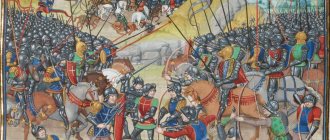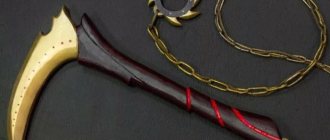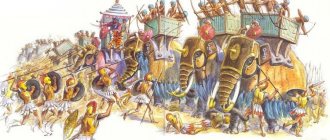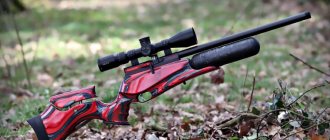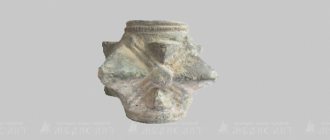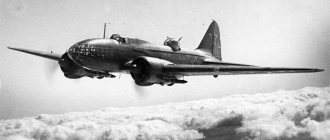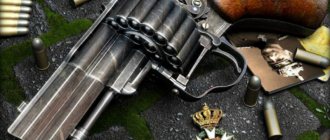Textbook on the general history of the Ancient World. Vigasin, Goder. 5th grade. Paragraph 2
TRIBAL COMMUNITIES OF HUNTERS AND GATHERERS
Explain the meaning of the words: axe, spear, harpoon, mammoth, homo sapiens, tribal community.
1.What helped our ancestors survive frosty winters?
The formation of clan communities, division of labor, improvement of tools, forms of collective hunting and methods of processing materials, as well as the use of fire (obtaining and preserving) and the manufacture of clothing determined the survival of people during the Ice Age and the Post-Ice Age.
2. What were the most ancient dwellings and clothing?
Ancient clothing was made from animal skins and fur. The most ancient dwellings are caves in which people could hide from bad weather and defend themselves from predatory animals. In areas where there were no caves, ancient people dug dugouts and built shelters from branches, bones and animal skins.
3. Why could only a close-knit group of people succeed in hunting large animals?
Alone, no hunter could cope with a large animal. Therefore, ancient people began to use collective driven hunting technologies. The roles of the hunters were distributed: some groups drove the animal into a prepared trap (a hole, a ravine, a swamp), other groups met the animal and killed it.
4. What signs of a tribal community does the word “community” express? What are the signs of the word “generic”?
The word “community” expresses one of the main characteristics of such a community - everything in the community was common: people got food together, arranged their homes, and the spoils, no matter who got them, were shared equally. The word “tribal” expresses the main feature of a tribal community, in which family ties were the main ones. All close and distant relatives in the community were considered relatives.
5. What advantages do bows and arrows have over spears and clubs?
Bows and arrows allowed ancient people to hunt small and fast animals, hitting them from a distance. You won’t be able to hunt such small animals with a spear and a club—they are designed primarily for hunting at close range.
Note: Of course, there is no talk of a distance of “hundreds of steps”, as stated in the textbook. In order to hit a target from such a distance, you need professional, not homemade, bows with a high degree of elasticity, enormous strength of the hunter to pull such a bow and enormous experience and eye to hit a moving target from such a distance. The authors' claim about “hundreds of steps” seems unlikely.
Describe the drawing “Clan Community” (see p. 18). What is shown in the foreground and background?
The picture shows a tribal community of ancient people. In the foreground, men are engaged in the manufacture of labor and hunting tools, and a woman sews clothes from skins. In the background we see a woman cutting a skin stretched on stakes and dried, people preparing food over a fire, a man who brought a deer skull for further processing. Children sit in a tent and watch adults work, learning from their experience.
Prepare a report on the finds of mammoth remains on the territory of Russia (see p. 19). (According to the textbook and Internet resources.)
A large number of mammoth remains have already been found on Russian territory. Most of the mammoth finds in Russia are found in Siberia and Yakutia. About 12 thousand years ago it was warm in those parts, so these large mammals were very common. The Ice Age led to the death of mammoths, whose remains were well preserved in the permafrost. The most famous finds are the well-preserved remains of baby mammoth Dima and baby mammoth Lyuba. Dima was found by a bulldozer operator in the Magadan region - it was established that the unfortunate baby mammoth injured his leg, and therefore (or maybe he was fleeing from saber-toothed tigers) fell into a mud pit or swamp. He couldn't get out and died. Due to the fact that the remains of the baby mammoth Dima lay in a layer of permafrost and moisture without access to air, it was perfectly preserved. Until 2007, this was the first unique mammoth found in its entirety. Now baby mammoth Dima is in the Zoological Museum in St. Petersburg.
In 2007, Dima’s record for the integrity of the carcass was broken by the baby mammoth Lyuba - she was found in Yamal. Presumably, the river washed the remains of the animal from the depths of Kolyma; they were discovered by local reindeer herder Yuri Khudi. Since Dima was pretty badly beaten up by the dogs, and the carcass lay there for about 10 days before the scientists arrived, Lyuba’s safety is entirely the merit of the reindeer herder, who spent 2 days almost running to reach civilization to report the find. Baby mammoth Lyuba is perfectly preserved.
Think and discuss. What are the differences between a spear and a harpoon (see figure on p. 17)? How did their invention change people's lives?
The difference between a spear and a harpoon is the tip. To hunt animals, a spear must have the ability to pierce thick skin and hit the vital organs of the animal. After this, the hunter should be able to quickly draw the spear for the next blow. Therefore, stone tips were made sharp, thin and as smooth as possible. For hunting fish, it was important to quickly hit the object and ensure that it was kept on the tip. Therefore, the tips for harpoons (spears) were made light (like the shaft itself), mainly from bone, and jagged so that the fish could not slip off the harpoon.
History of the spear
The simplest spear of primitive man was a straight, planed and sharpened stick made of hard wood, approximately the height of a person. As a rule, the tip was burned for hardness.
Hasta Pilums (pila, singular pilum) are throwing weapons used by ancient Roman warriors.
The fort (in Rus' simply called a “stake”) did not have an advantage to the tip and did not rush. Usually it was held with two hands, since in order for the blow to be sufficiently effective (and when fired, the tip acquired hardness, but lost its sharpness) it was necessary to lean on it with all the weight.
Relatively late, only 12-17 thousand years ago, during the Mesolithic era, spears began to be equipped with tips made of stone or bone and were divided into throwing and melee.
For a long time, throwing spears decisively prevailed, since they allowed for dual use - after all, they could also strike. Therefore, even in the age of metal, right up to the transition to combat tactics in close formations, and among some peoples even after, spears remained universal. Typical examples in this regard are the ancient German frame with a soft iron tip and the early medieval Frankish angon.
If the spear was intended for both throwing and striking, the warrior usually carried two spears, so that, having thrown one, he would not remain unarmed. Or he limited himself to one, but supplied it with a leather belt several meters long, by which the spear could be pulled back after being thrown.
Quite late, just a few thousand years ago, already during the transition to sedentism, in addition to throwing and hand-to-hand spears, another type of spear appeared - driven, in the simplest version, which was an ordinary stake, but quite thick (just enough to cover with your hand ) and long (up to 200 cm). The purpose of such spears was to repel the attacking beast. The driven spear, or, as it was more often called, the spear, was pressed with its blunt end into the ground, stepped on it with the foot and put the tip forward.
Invisible "long spears"
After World War I, the de facto standard for torpedoes on surface ships and submarines around the world became 533 mm, that is, 21 inches.
True to the precepts of grandfather Freud, the Japanese admirals said: “It won’t be enough!” - and in 1920 they introduced 610 mm torpedoes for their future battleships. True, it was a bummer with the battleships, but is this a reason to refuse such wonderful toys - the most powerful torpedoes on the planet? Without thinking twice, the Japanese began to arm all cruisers and destroyers under construction with them. And the funny thing is that for 20 years no one in the world noticed this point-blank! Meanwhile, Japanese designers did not stand still and “with the help of a crowbar and some kind of mother” were able to do what their “white” colleagues failed at - they mastered a torpedo engine, which could use not compressed air as an oxidizer, but much more effective pure oxygen.
The light cruiser Nagara was the first Japanese ship armed with 610 mm torpedoes. Back in 1923
This is how the famous “long spears”, 61-cm oxygen torpedoes mod. 93, like a bull and a sheep, covered all foreign analogues not only in terms of warhead power, but also in speed and range. Since 1936, all Japanese cruisers and destroyers under construction were armed with these torpedoes immediately, and those already built were re-equipped with them to the best of their ability.
And again, all the intelligence services in the world valiantly failed...
Although it’s hard to blame them here - something, but in Japan they knew how and loved to keep everything secret. And in this case, they had a blast: even in the secret operating instructions for the new torpedoes, the word “oxygen” itself was missing; it was elegantly called “give me a cookie” - “air No. 2.”
On the same topic
Alternative: Could Japan have won World War II?
Only at the very end of the 1930s did cautious suggestions finally appear in German reference books that four Japanese cruisers and a couple of dozen destroyers of the latest series “may be armed with 609-mm torpedoes.” Although by that time the Japanese had already produced 38 cruisers and more than 80 destroyers carrying torpedoes “for the big boys” - both conventional and oxygen-based, about which no one still knew anything.
In the spring of 1940, the naval attache of the US Embassy in Tokyo, Captain 2nd Rank Henry Smith-Hatton, had a chance to verify these rumors - his informant managed to visit the newest Japanese “super destroyer”. He not only confirmed that the caliber of the torpedoes was “closer to 25 inches,” but also recounted the boastful words of the officer conducting the tour about the coolest oxygen torpedoes in the world.
The invaluable information immediately went to Washington, where... it was safely shelved.
American experts simply did not believe that the “backward Asians” were able to implement what was beyond the power of designers from “civilized countries.” And they are not alone...
Half a ton of TNT-RDX in the warhead of the “long spear” is a very unpleasant thing. These suddenly snub-nosed heavy cruisers New Orleans and Minneapolis will not let you lie. But they are still lucky
Meanwhile, the war began, and in its first year alone, with the active participation of the “long spears,” ten Allied cruisers and seven destroyers went to the bottom, and six more cruisers were seriously damaged. Things got weird - when American ships began frantically searching for non-existent submarines. It never occurred to them that the torpedo salvo could have come from Japanese ships looming far on the horizon.
And only on April 20, 1943, in a report from the US Navy intelligence department, it was first mentioned: “some of the Japanese destroyers may be armed with 24-inch torpedoes,” but the Americans never dug up any information about oxygen engines. By that time, exactly three years had passed since the “first call” from Henry Smith-Hatton.
A page from Identification Manual 41-42, published in the spring of 1943. All Imperial Navy cruisers and destroyers in this guide are armed with 21-inch (533 mm) torpedo tubes
Types of copies
Infantry Spears
Against infantry
Against cavalry
By using a tip of a minimum size and making the shaft from relatively light wood, the weight of the pike was kept at 4.5 kg, however, the point of application of this force had a lever of about two meters, which made the pike extremely inconvenient to hold.
In battles with infantry, they did not strike with a pike; they simply pointed it at the enemy and advanced. The end of the pike was pinched under the armpit - this was the only way it could be held horizontally. Or, if the pikemen had cuirasses (which became common since the end of the 15th century), the blunt end of the pike rested on a special holder - a “current”, welded to the cuirass. This measure made it possible to achieve a more rigid fixation of the pike (which was important when pushing through enemy armor) and slightly increase its effective length.
In the 17th century, after the advent of mobile artillery, in order to increase the mobility of troops, the heavy pike began to be replaced by a light one - only 300 cm long, suitable also for striking. The light pike weighed less than the heavy one - about 2.5 kg - but had a much larger tip - with a pair of additional blades (functioning as a crossbar) - and a counterweight - which made holding it more convenient. However, even such a pike remained too long for use in individual combat. The pikeman still carried a sword or dirk.
The light pike, however, no longer provided completely satisfactory protection against cavalry; the prerequisites for its adoption arose only when the musketeers began to take on the brunt of the fight against cavalry. From the end of the 17th century, light pikes began to be rapidly replaced by bayonets. In 1700, they had already been withdrawn from service in France, but during the French Revolution they were removed from arsenals and had some use, due to the shortage of guns.
Outside Europe, 400 cm long pikes were used to fight chariots in China.
Cavalry spears
Soon the Macedonians figured out how to use sarissas in cavalry combat. It was possible to hold the 420 cm long sarissa only by taking it at the ready, and, in this case, the impact of the blow was in the horizontal plane. Without stirrups, the rider was doomed to fall, but this did not happen, since the sarissa was tied to the saddle with leather straps - the straps absorbed the recoil.
With the invention of stirrups, cavalry spears or pikes began to be used everywhere. Usually they did not have any original design features - a weight of about 2.3-3.3 kg, a brittle shaft of 280-340 cm, a small tetrahedral or flat tip, a counterweight. This is how they remained among the light and medium cavalry until the 20th century.
From the 14th century, spears began to be glued together in the form of a hollow tube and received a conical shield that protected the hand. Hollow spears weighed less and broke more easily, which became especially important when they were thrust into the current. The expression “breaking spears” has since become synonymous with knightly combat.
Elusive "Zeros"
The Japanese really wanted a cool new fighter, but they couldn’t use American know-how “with a good engine and the stool will flutter.” So I had to do some perversions for the poor - polishing the aerodynamics, mastering new high-strength alloys and making the design incredibly light. The result was the most famous Japanese aircraft of all time, the legendary Zero, which entered service in 1940.
The outstanding characteristics of the Zero were largely achieved by facilitating its power set
The fighter almost immediately went into battle in China, so there was no particular point in keeping it secret as usual. However, the assistant US naval attache in Tokyo, Lieutenant Commander Stephen Jerica, was a little freaked out when he found the machine openly on display in January 1941 at the annual military celebration, during which the Japanese Army and Navy traditionally measured the length of their guns and other things.
“We warned you!” Henry Smith-Hatton, the naval attaché at the US Embassy in Japan, and his aviation assistant, Stephen Jerica, might have said.
A diplomat with pilot “wings” on his jacket conscientiously copied the aircraft’s flight characteristics from the exhibition plate, carefully examined the aircraft itself, and even watched a training battle between a “Zero” and an army fighter. After which he sent a detailed report to the US Navy Intelligence Directorate.
Has everyone already guessed what happened to this information?
But they didn’t guess right! For the first and last time during Steven Jerick's service in Japan, he received a response from Washington. All the experts there agreed that an aircraft with such a combination of characteristics simply could not exist in nature. And even more so, it could not have been created by some narrow-eyed people - after all, everyone knows that they only know how to unsuccessfully copy outdated Western models!
“Japan is NOT an aviation power” is a typical headline for an article about Japanese aviation in American specialized publications of the interwar period.
So the irritated superiors strongly recommended that the lieutenant commander no longer send such propaganda nonsense and disinformation. And do not distract them from really important matters, such as writing analytical reports on the backwardness of the Japanese aviation industry.
A year passed, and the “non-existent” fighter turned into a very real nightmare for Allied aviation. With its help, the Japanese actually cleared the skies in the Pacific theater of operations. And each time, the speed and maneuverability of the Zero came as a complete surprise to those who were unlucky enough to encounter it. And those few who survived this described the “Zero fighter” in enthusiastic and panicked reports.
The restored "Zero", captured on the island. Akutan. Already in camouflage and with identification marks of US naval aviation - so as not to tempt anti-aircraft gunners
Only in the fall of 1942, after testing a sample captured in the Aleutian Islands, did the Americans finally find out that the data received from Tokyo almost two years earlier actually corresponded to reality.
Spear symbolism
The spear is a symbol of belligerence, aggressive activity (in Scandinavian mythology, Odin, throwing a spear in the direction of the opposing army, marked the beginning of the first war between the gods), as well as a phallic symbol. The latter meaning can be illustrated by the Vedic cosmogonic myth of churning the ocean of milk with a spear or the Orphic story of the world egg being broken by a spear. The Ugaritian deity of thunder and fertility, Baal, is depicted with a lightning spear striking the earth (another image of the erotic unity of two principles). The emblem of victory is the spear of Indra, the Hindu god of war. In China, the spear is an attribute of many minor gods.
The spear is one of the symbols of the world axis.
Source
Meaning of the word "spear"
Source (printed version):
Dictionary of the Russian language: In 4 volumes / RAS, Institute of Linguistics.
research; Ed. A. P. Evgenieva. — 4th ed., erased. - M.: Rus. language; Polygraph resources, 1999; (electronic version):
Fundamental electronic library
An ordinary spear consists of a wooden shaft and a metal tip, the shape of which can be very diverse.
Source:
“Explanatory Dictionary of the Russian Language” edited by D. N. Ushakov (1935-1940);
(electronic version):
Fundamental electronic library
spear I
3. sport. sports discipline, type of competition associated with throwing this projectile ◆ The Russians compensated for the planned failures in the 100-meter run and the 4 × 100 m relay race and the unplanned failure in the triple jump with a victory for Pechenkina and prize-winning places for Feofanova, Zykina, Tatyana Shikolenko ( javelin
), Elena Zadorozhnaya (3000 m) and Natalia Sadova (disc). Sergey Podushkin, “Stars of the Continents”, Russians won the World Athletics Cup // Izvestia, September 22, 2002 (quote from NKR)
Phraseologisms and stable combinations
spear II
1. outdated the front side of the coin (the name was used when playing toss)
2. decompression collected in combinations like “[[without a spear]], [[no spear]], [[no spear]]”: kopeck, kopeck; money ◆ They didn’t pay a single cent
(in Ust-Izhma, Shukhov received at least thirty rubles a month). Solzhenitsyn, “One Day in the Life of Ivan Denisovich”, 1961 (quote from NKR)
Phraseologisms and stable combinations
Making the Word Map better together
Hello! My name is Lampobot, I am a computer program that helps you make Word Maps. I can count perfectly, but I still don’t understand very well how your world works. Help me figure it out!
Origin of the spear
It is known for certain that spears were used in various spheres of life not only by people, but also by Western chimpanzees who lived near Kédougou (Senegal). Orangutans made spears from tree branches, clearing them of bark, sharpening the tip of their future weapon with their teeth. They used spears to catch fish, and later this type of hunting spread among people.
Background
Archaeological evidence reflected in various historical documents tells us that wooden spears have been the main hunting tool for more than 400,000 years, and a 2012 study suggests that the first technologies for making spears appeared about 500,000 years ago.
Craig Stanford, a professor of anthropology at the University of Southern California, suggested that the use of chimpanzee copies likely means the tool is about five million years old. Neanderthals began using stone spear points 300,000 years ago, and they also used fire-charred spear points.
About 200,000 years ago, points with complex stone blades consisting of scaly ribs began to be used. Stone tips were attached to the shaft using resins, various strappings made of leather and animal tendons, and plant materials. During this period, there was a clear distinction between throwing spears and spears for close combat.
The very first army in history
Clothing - regular and protective
Sources show the existence of various types of tunics among the Sumerians - from simple loincloths made of fabric or skin to embroidered skirts of a complex cut.
Light infantry typically wore short loincloths (mid-thigh length) made from a rectangular piece of wool or linen fabric. In addition, processed sheep skin with the wool facing out was common as a material. Most likely, the headbands and skirts were not dyed and were off-white in color. Spearmen and officers are depicted wearing longer skirts (approximately covering the knees), probably cut and sewn skirts. Sometimes the skirt had a supporting strap slanted across the shoulder, made of the same material as the skirt itself. For long skirts, wool or linen fabric was also used, as well as sheep skin with the fur facing out. Fur skirts most likely had a natural color, while fabric ones could be undyed or dyed with one of the available natural dyes.
1/3
Heading1
Heading2
Heading3
Men's skirts made of fabric and sheepskin (imitation sheepskin is possible). World panel of the Standard of Ur. British museum
Men in skirts from the relief of the ruler of the city of Lagash named Ur-Nanshe. Louvre Museum
A figurine of the ruler of the city of Lagash, Eannatum, wearing a long fur priest skirt. Louvre Museum
Tunics, which covered more of the body, were secured to the hips with ropes, fabric sashes or wide leather belts. The lower edge of a fabric skirt or tunic was often cut out in the form of triangular teeth, imitating the strands on a sheep's skin.
The use of leather protective skirts along with leather raincoats cannot be ruled out. Most likely, they were worn by professional warriors from the permanent royal and temple squads, and not by the majority of militia fighters.
The warriors in the front ranks of the Sumerian infantry phalanx needed better protective equipment than all others: when approaching the enemy army, they were under fire from enemy slingers and archers. In hand-to-hand combat, the main concern of the spearmen in the front ranks was maintaining formation. Hemmed in on both sides by his neighbors in the battle formation, the warrior in the front ranks was limited in his ability to maneuver and repel enemy attacks. The solution was found in the prototype of all heavy armor of later times - a protective cloak made of thick fabric (possibly felt) or leather. Cloak or felt cloaks were most likely a natural off-white color. Leather cloaks retained their natural color or were painted with some kind of paint. In the texts of Uruinimgina (ruler of the city of Lagash), when describing protective equipment, “shiny leather” is mentioned, which indicates a high level of leather manufacturing technology. For additional protection, round copper disks or numerous smaller rivets were attached to the cloaks.
Protective combat cloaks. War panel of the Standard of Ur. British museum
The clasp of the cloak appears to have been a strip of leather that was somehow secured to the fabric or leather. The protection was based on the effect of freely hanging fabric, which slows down projectiles that hit it, and also partially protects in close combat. Copper discs across the entire surface of the cloak also enhanced the protective effect (both directly and indirectly). Under the weight of copper plaques and rivets, the cloak sagged - and the protective effect of the freely hanging fabric increased.
As an additional element of armor, and perhaps an alternative to a battle cloak, to protect the torso, Sumerian warriors used wide ribbons of leather or thick fabric (possibly felt) crossed on the chest. The ribbons were reinforced with copper elements.
Protective tapes on Sumerian warriors from the so-called Standard of Mari. Metropolitan Museum of Art, New York
We do not know whether the protective clothing items were dyed and, if so, what colors. Written Sumerian sources record the coloring of fabrics, skins, yarn and threads with natural dyes. The use of such dyes has been documented:
- alkanna - gives a beautiful blue color, but very fragile;
- woad (blue blue) - blue color;
- turmeric - turns yellow;
- safflower - colors yellow or orange;
- kermes - gives a blood-red color.
The most accessible and widespread colors were most likely red and olive green.
War spears
Ancient history
Infantry
Short, one-handed, metal-tipped spears were used in combination with shields at the dawn of the Bronze Age. They were used in martial arts and military operations. This tradition will continue until the emergence of the ancient Greek city-states.
Africa
Greeks
In the 7th century BC, the Greeks modified the spear to equip phalanx infantry. Hoplite warriors were equipped with a large round bronze shield (hoplon) and a 2..2.5-meter spear with a tip made of iron and a bronze inlet (doru). Hoplites dominated all wars between Greek city-states from the 7th to 4th centuries BC.
Cavalry
The cavalry also readily used spears. Most ancient cavalry units were armed with either javelins or used short spears for close combat. However, some types of cavalry used one- and two-handed cyston spears 3-4 meters long. The two-handed kontos, used by heavy cavalry (cataphracts), was developed by nomadic eastern Iranian tribes and spread throughout the ancient world. Later, Roman and Byzantine armies also used troops armed with these types of spears.
Romans
The first types of Roman troops (spearmen and battalions) were often equipped with gladius and pilum swords; specially designed heavy spears were thrown at the enemy in such a way as to get stuck in his shield.
Initially, the weapons were short spears called hasta, but they were soon replaced by the gladius. Only the triarii continued to use hasta. From the end of the 2nd century BC. and until the end of the 2nd century AD. all legionnaires were equipped with a pilum. In the 4th century, the pilum disappeared from public use.
Middle East and North Africa during the Islamic period
European Middle Ages
Infantry
Historically, spears were classified for close combat or throwing. But even in such a simple classification there was room for various categories. By the way, J. Swanton was able to identify thirty different categories and subcategories of spears in early Saxon England. Most of them had a leaf-shaped tip. The most famous types of early medieval spears:
A distinctive feature and at the same time the main advantage of spears for close combat was their length. It is quite difficult to name the exact dimensions, but there are museum exhibits ranging in size from 1.8 m to 2.5 m. It is known for certain that the Scots and Flemings used much longer spears in their weapons.
Cavalry
The 14th century was characterized by changes in the size of the spear. Because knights had to fight on foot, this necessitated the need to reduce the length of the spear to 1.5 m in order to give it more controllability.
European Renaissance
Infantry
The development of two-handed pikes and gunpowder in Renaissance Europe predetermined the decline of spears; they are simply becoming obsolete on the battlefield, giving way to pikes and espontons (a shortened pike used by officers and non-commissioned officers).
Cavalry
At the beginning of the Renaissance, cavalry were armed with spears; The gendarmes used heavy knightly spears, the light cavalry used various variations of short spears. By the 1540s, the cavalry was armed with pistols, which naturally relegated spears to a secondary role. However, spears are preserved in Eastern Europe, from where they returned to the continent again in the 19th century.
China
Japan
Mesoamerica
Spears were used in the post-Meso-American period in various conflicts, including the Latin American and Spanish American Wars of Independence.
Weapons and armor of soldiers of the Trojan War. Part 5 Spears
Home » Real story » Mysteries of the history of the distant past » Weapons and armor of the soldiers of the Trojan War. Part 5 Spears
Mysteries of the history of the distant past
byakin 09/28/2019 1436
16
in Favoritesin Favoritesfrom Favorites 8
The spear is certainly one of the oldest types of weapons, if not the most ancient. However, the club may well be considered the most ancient, but the spear, and especially the spear with a flint tip, is a more perfect thing. When did the first spears appear? Science can finally speak out quite definitely on this matter. The oldest spearheads have been found in eastern Africa. They are approximately 280 thousand years old, that is, they are 80 thousand years older than the earliest remains of people of the modern species Homo sapiens and 200 thousand older than other examples of similar artifacts that were still considered the oldest examples of such products! They were discovered in the Gademotta formation on the slopes of a destroyed volcano in the rift valley in central Ethiopia. Today this area is a mountain ridge that rises above one of the four reservoirs of the rift valley - the picturesque Lake Ziwai. During most of the Middle Pleistocene (approximately 125–780 thousand years ago), there was a “mega-lake” there, uniting four present ones. Paleontologists found there numerous remains of antelopes and hippopotamuses and 141 obsidian points. They were studied by Jonathan Zale from the University of California, and the objects were the tips of throwing weapons, for which the damage present on them was examined. The fact is that at the moment of impact, V-shaped cracks form on the obsidian plates. Moreover, the top of this letter “V” marks the point from which they spread. The narrower the "wings" of the "V", the higher the rate of cracking in the obsidian. That is, in the first case, the spear was thrust into the victim, and in the second, it flew to the target, being thrown by a strong hand.
The famous image of the “march of warriors” on a vase from Mycenae. Note the leaf-shaped tips and strange pouches on the spears
reconstruction of the appearance of a heavily armed Achaean warrior
heavily armed Mycenaean warriors killing a lightly armed warrior from Pylos (artist Peter Connolly)
Obviously, the invention of projectile weapons was a giant step forward compared to direct impact weapons (stone spear points appear in the archaeological record approximately 500 thousand years ago). Now hunters had the opportunity to attack from a distance, which sharply reduced the risk of dying when approaching a potentially dangerous animal (bull or hippopotamus) and significantly expanded the range of prey itself. Before this discovery, it was believed that throwing weapons appeared approximately 60–100 thousand years ago. The oldest dart found was 80 thousand years old. Behind them came a bow and arrows, as well as a spear thrower (atlatl). It seemed quite logical that all this was invented by none other than Homo Sapiens, since it is much more difficult to invent and manufacture throwing weapons than piercing weapons. And as soon as these weapons appeared in the hands of our ancestors, they relatively quickly populated the rest of the world, displacing other representatives of the genus Homo. However, new data destroys this harmonious picture, and suggests that darts were used not only by our immediate ancestors, but also by representatives of some other, more ancient African population. Zale himself believes that the creator of the most ancient darts was most likely Heidelberg man - the most likely ancestor of Homo Sapiens and the same Neanderthals.
One of the oldest arrowheads of the Achaean period, dating back to 2700 - 2300. BC, and found on the island of Amorgos in the Cyclades archipelago
But don't be upset if we never know whether Homo sapiens adopted these weapons or invented them themselves. It is much more important to know that this period (200-300 thousand years ago) was very important in human evolution: new anatomical features and more complex tools appeared, indicating a change in his behavior (and, accordingly, thinking). Apparently, that's when people started talking. You should not pay attention to the fact that this find was made in Ethiopia. They could have been invented anywhere and by anyone. The main thing is that even in such a distant time from us, ancient people could easily fight at a distance! Although the same stone tips were not always used by primitive peoples in our time. For example, the spears of the Australian aborigines are most often solid wood, that is, they are a simple pointed stick! Exactly the same trophy - a polished wooden spear with a harpoon-shaped wooden (!) tip was obtained in 1779 in the Hawaiian Islands in a battle with the islanders, where Captain James Cook was killed. On the Solomon Islands, the spikes on the tips of the spears were made of bone, however, spears with carved wooden tips were also in use there and... why wouldn’t our distant ancestors use exactly the same spears in the Stone Age, because all the materials for their manufacture were at hand !
So, having such a historical “background” in the past, it is hardly surprising that both the ancient Cretans and Achaeans also used spears and darts. Thus, during excavations of early Greek settlements such as Sesklo and Dimini, dating back to the early and middle Bronze Age, spearheads were found in large quantities, and in general they are quite common.
Another similar tip from the Cyclades Islands
There is a classification of spearheads discovered in their era, but it is not as interesting and visual as the classification of swords, so it hardly makes sense to present it here. But according to the main characteristics, this type of weapon deserves a detailed description. So, judging by the iconographic data, there were three main variants of the spears: very long, quite long and short.
Fastening of flat-type arrowheads found on the Cyclades Islands and Crete (16th century BC)
The first, which could reach a length of 3 to 5 m, and were used mainly in the early periods, even if their use is confirmed in the Iliad. They could be the weapon of infantrymen who held them with both hands and used them both against the enemy in war and against a dangerous animal during a hunt. Most likely, these spears were equipped with large bronze tips. In contrast, shorter spears were used throughout the Late Bronze Age. Short spears were used for throwing and during close combat or hunting. Often they are indistinguishable from darts, that is, special throwing spears.
spearman with figure-eight shield
the battle near the Achaean ships and the duel between Ajax Telamonides (Ajax of Salamis) and Hector (in scaly bronze armor); shows the use of both long spears and short (including throwing) spears (Peter Connolly)
Ajax Oilidus (Ajax of Locria) with the severed head of the Trojan Garcas (Giuseppe Rava); unlike Ajax the Great, Ajax the Small has a more modern set of weapons at that time (with two spears) and armor (full armor and a round shield instead of a tower shield)
As for the finds of spearheads, one of the earliest samples discovered on the territory of the Aegean world is a leaf-shaped copper tip, dating back to 2700 - 2300 BC. BC, and found on the island of Amorgos in the Cyclades archipelago. The shape of this tip and the way it is attached to the shaft are interesting. Obviously, it was inserted into a split or cut (see figure) and tied to the shaft with rope or sinew. It is possible that such a fastening was fragile and easily “loose”, so such tips were soon (relatively speaking, of course!) replaced by another one - petiole. Between 1600 and 1200 B.C. Such stalked tips made of copper and bronze spread throughout the Aegean world and replaced the tips of the previous type.
Tips 1600 to 1200 BC found in Cyprus
Attaching petiole tips
The originality of thinking of the authors of this mount cannot be denied. Obviously, under the petiole, a hole was made in the cleft with a hole to bring the cap of the petiole out on one side. Then the petiole itself was smeared with glue, the ungulate was most likely inserted into this hole, and the split itself was again wrapped with rope or tendons. This mount was much stronger than the previous one, therefore it was more convenient to use such a spear both in battle and hunting. The tip itself has also become stronger. A noticeable longitudinal rib appeared on it.
Tip from Pylos (circa 1350 – 1200 BC)
At the end of the late Achaean time, socketed tips appeared, which were simply put on the shaft. They were of different shapes - leaf-shaped, with a lenticular profile, with and without an edge, and faceted, often cruciform in cross-section.
Bronze tip from a burial at Asina (circa 1300 BC)
Short darts were used not only for throwing, but also in hand-to-hand combat, as illustrated by the fresco from Pylos, where one of the combatants stabs his opponent in the groin with it. It is interesting that although the warrior himself is practically naked, he again wears a helmet made of boar tusks on his head, and on his feet are shoes that cover his feet and leggings.
Fresco from Pylos (left) and modern reconstruction by Peter Connolly (right)
In a similar way - that is, with a short javelin or spear - the warrior in greaves, a “boar helmet”, and a “tennis shirt” in a fresco from Mycenae is armed.
Fresco from Mycenae
But this trident (left) was found during excavations of an Achaean settlement near Hala Sultan Tekke in Cyprus and dates back to the 12th century. BC. Most likely, such a three-piece was used to beat fish, but it could also be used in warfare (on the right is a reconstruction by the artist Giuseppe Rava)
source: https://topwar.ru/83674-oruzhie-troyanskoy-voyny-kopya-chast-pyataya.html
Hunting
Modern era
In the 18th century, spear hunting ceased to exist in most European countries, but began to revive in Germany in 1930. This type of hunting is still widespread in the United States. Wild boars and deer are hunted using spears. Gene Morris, a retired colonel, proposed in 1992 to officially allow this type of hunting in the state of Alabama. His efforts were successful; Morris was the only man in the country to use spears for hunting, jokingly calling himself "the greatest living spear hunter in the world." He later opened a hunting museum in Summerdale, Alabama. He died in 2011.
Source
